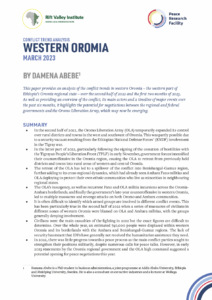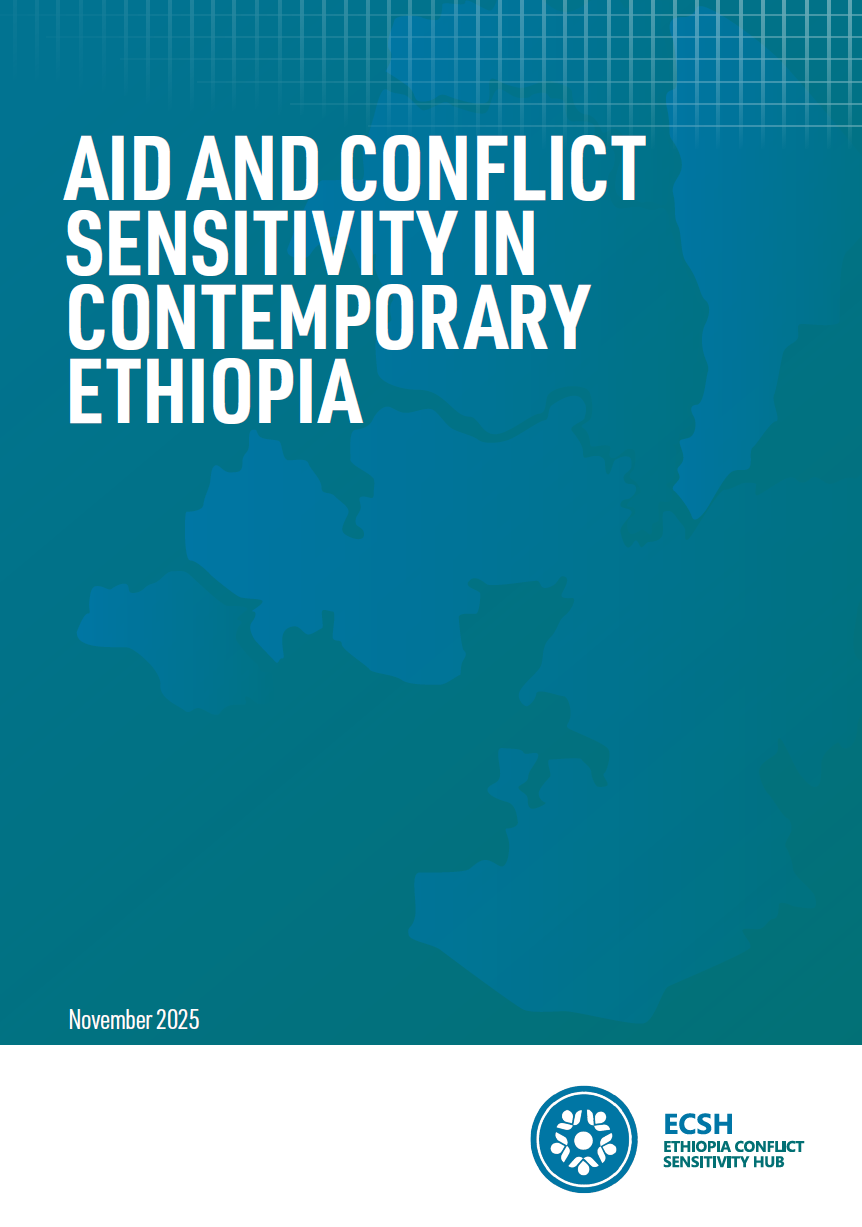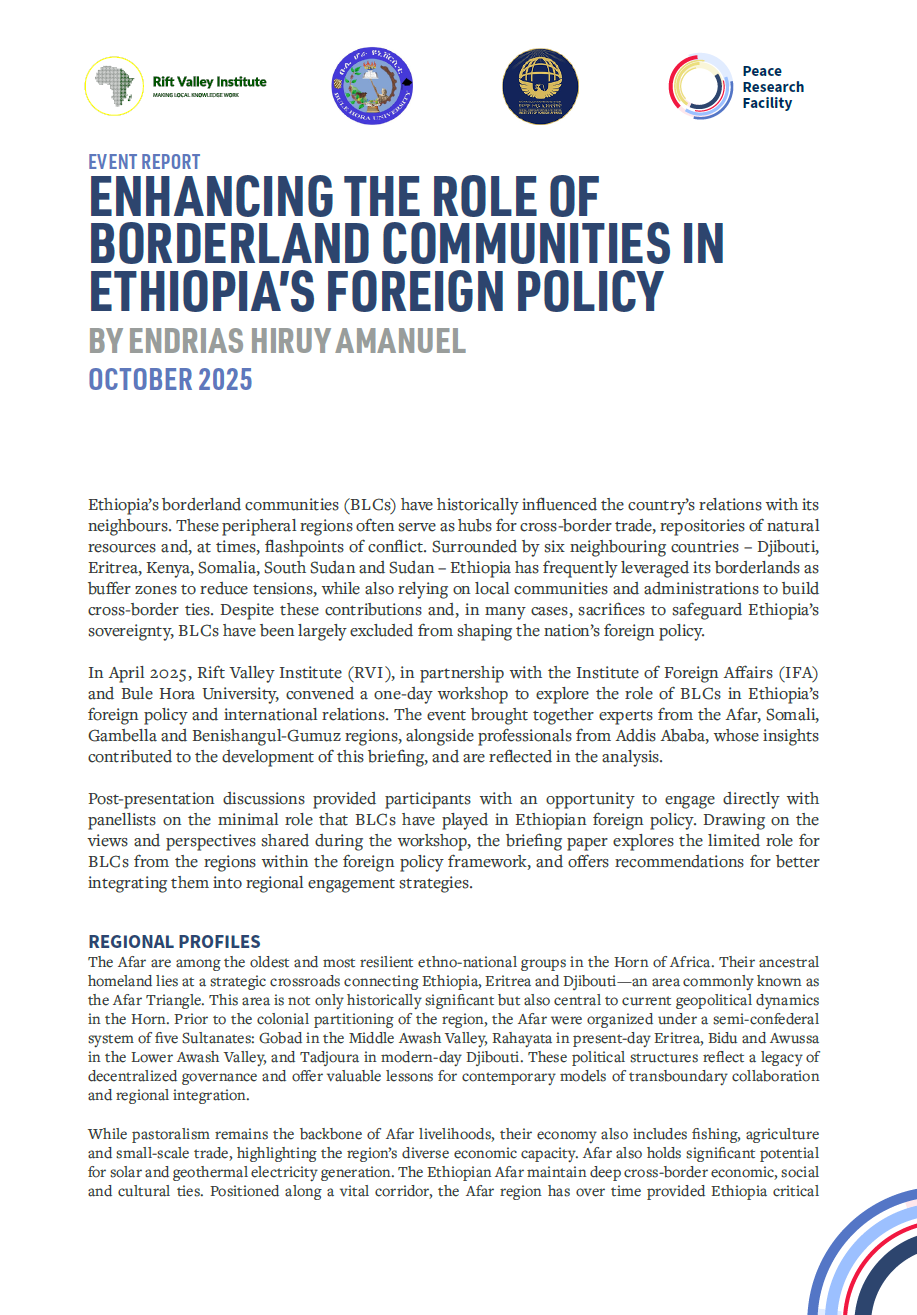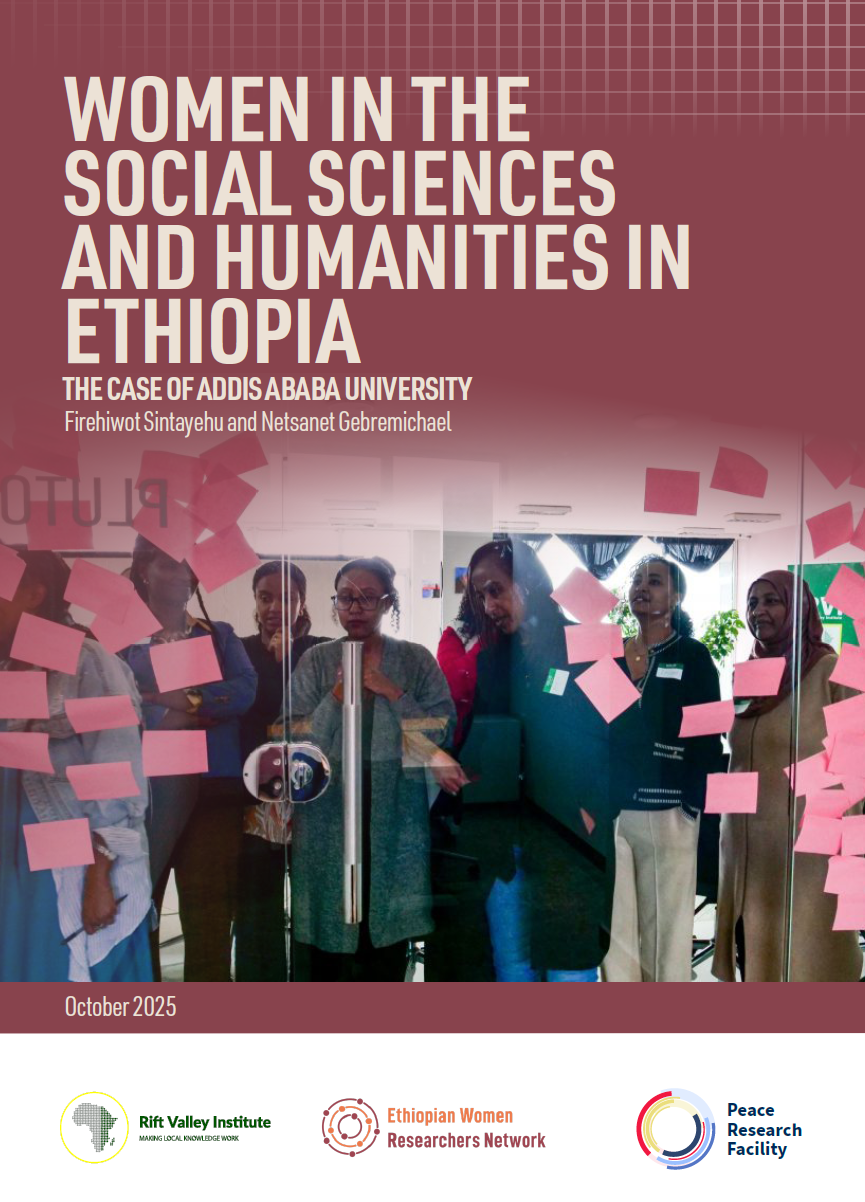This conflict trend report was produced by the Ethiopia Peace Research Facility (PRF).
The PRF is an independent facility combining timely analysis on peace and conflict from Ethiopian experts with support for conflict sensitive programming in the country. It is managed by the Rift Valley Institute and funded by the UK government.
INTRODUCTION
Western Oromia makes up about a third of Ethiopia’s largest regional state, Oromia. The seven zones generally considered to be part of western Oromia – Kellem Wollega, East and West Wollega, Horru Guduru Wollega, Illubabor, Buno Bedelle and Jimma – border three of Ethiopia’s other regional states: Amhara, Benishangul-Gumuz and Gambella, as well as Upper Nile state in South Sudan. Since 2019, western Oromia has been the site of insurgencies, counter-insurgencies and cross-border attacks, leading to hundreds of deaths and thousands of people displaced. These conflicts are mostly, but not exclusively, related to the activities of the OLA and militia forces from the Amhara and Benishangul-Gumuz regions.
Conflicts in western Oromia initially flared up in late 2019 following a failed reconciliation agreement signed in August 2018 in Asmara, Eritrea, between the Oromo Liberation Front (OLF) and the Oromo Democratic Party (ODP). The agreement was intended to enable the OLF – previously listed as a terrorist organization by the Ethiopian government and mostly exiled during EPRDF rule – to return to Ethiopia, disarm its fighters and engage in peaceful opposition politics. But an orderly disarmament, demobilization and reintegration (DDR) programme did not take place and a split within the OLF over the agreement quickly emerged. Refusing to disarm, in October 2018 the western military wing of the OLF – the OLA led by Jaal Marroo – severed ties with the party and built up its command in Wollega, from where it then waged an insurgency for Oromo self-determination. By May 2021, Ethiopia’s government listed the OLA, which it calls ‘OLF Shene’, as a terrorist organization.
The political tensions that led to the conflicts in western Oromia go beyond the mismanaged disarmament agreement. A plethora of different political and armed actors have been involved – not only limited to different factions of the OLA, the Ethiopian federal and Oromia regional governments and their respective military forces, but also neighbouring ethnic militias, particularly from the Amhara and Benishangul-Gumuz regions. The Ethiopian government’s handling of civil strife in the Oromia region turned increasingly authoritarian since the middle of 2020, after protests broke out across the region in the wake of the assassination of Oromo singer Hachalu Hundessa on 29 June 2020. Violence and looting continued into the following year. In western Oromia, the government’s relative inaction in response to kidnappings and attacks on civilians, cross-border attacks by unidentified armed groups and retaliations from within Oromia, allowed the conflict there to spiral out of control.
Prior to the war in Tigray, federal and regional military forces had coordinated to push OLA to the fringes of the region, limiting its activities to the forests and rural parts of Wollega. But when the war broke out in November 2020, the ENDF and Amhara regional and ethnic militias were re-deployed to fight in the north. The resulting security vacuum allowed the OLA to regain strongholds in all of the Wollega zones and expand to other parts of Oromia, especially the south-west, over the next two years. In August 2021, the OLA announced that it had entered a military alliance with the Tigray Defence Forces (TDF) and in November 2021 joined the United Front of Ethiopian Federalist and Confederalist Forces, though their forces failed to link up on the battlefield.9 Only a year later, as the TPLF entered peace negotiations with the Ethiopian government, government forces redoubled military operations to combat the OLA in western Oromia. The intensification of the government’s counterinsurgency resulted in further human suffering inflicted by air and ground assaults, including on civilian targets, aggravating the displacement crisis in the region.
This briefing focuses particularly on events during the second half of 2022 when the OLA made significant military advances in western Oromia, gaining partial control over West Wollega and Kellem Wollega zones, parts of East Wollega zone (Limu Gelila, Ebantu, Gidda Ayana and Haro Limu districts) and south-west Oromia (Chewaka and Dabo Hana districts of Buno Bedelle Zone) and two districts of Illubabor zone (Darimu and Mako).




